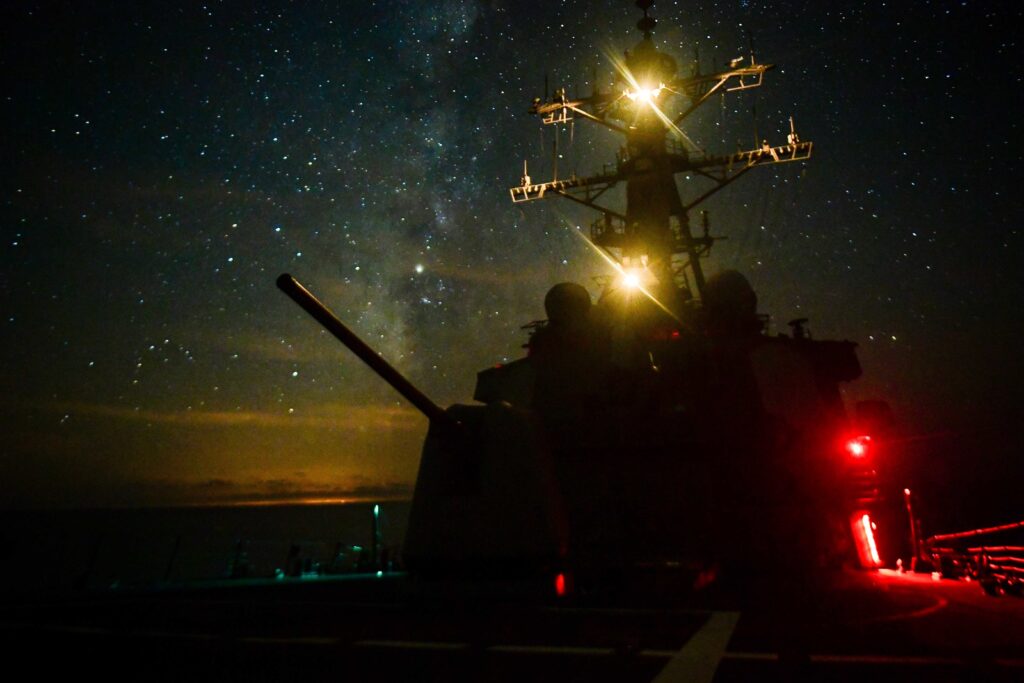
ROTA, Spain — The Arleigh Burke-class guided-missile destroyer USS Ross (DDG 71) departed the U.S. Naval Forces Europe-Africa area of operations, marking the end of its time as a Forward Deployed Naval Forces-Europe (FDNF-E) Destroyer, Sept. 6, said U.S. 6th announced Sept. 7.
USS Paul Ignatius (DDG 117), named after Paul Ignatius who served as the secretary of the Navy from 1967 to 1969, replaced Ross in the third of four scheduled homeport shifts to occur in support of the U.S. Navy’s long-range plan to gradually rotate the Rota-based destroyers. USS Roosevelt (DDG 80) replaced USS Carney (DDG 64) in the first homeport shift and USS Arleigh Burke (DDG 51) replaced USS Donald Cook (DDG 75) in the second.
“Ross and her crew performed admirably while operating as a FDNF-E destroyer,” said Capt. Ed Sundberg, Commander, Destroyer Squadron 60 and Task Force 65. “For eight years, the entire Ross team stood shoulder to shoulder with our allies and partners building interoperability and bolstering capabilities by playing critical roles in exercises and operations.”
Ross joined USS Donald Cook in June 2014 as the first two Rota-based FDNF-E destroyers under Commander, Task Force 65. Upon arrival to C6F, Ross executed its first patrol in the Baltic Sea participating in Sea Breeze with Ukraine.
After 12 patrols while assigned to U.S. 6th Fleet, Ross wrapped up its final patrol in the Mediterranean while operating alongside NATO allies and regional partners during the onset of the Russian invasion into Ukraine. Ross’s contribution as an FDNF-E ship has demonstrated the U.S.’s enduring commitment to its NATO allies and partners.
Ross’ commitment to NATO Allies and regional partners extended well beyond the Mediterranean. During its eight years sailing from Rota, Spain, Ross frequented exercises and operations with allies in the Black Sea, Baltic Sea, Barents, Artic Circle and off the coast of Africa and visited numerous countries.
“Today’s challenges require strong alliances and partnerships that demonstrate our integration and interoperability capabilities. I am extremely grateful for for the opportunities Ross has had, and humbled to have the privilege serving overseas with such a phenomenal crew,” said Cmdr. Scott Jones, Ross’ commanding officer. “Our experiences in 6th Fleet have been priceless, and we will not soon forget the lessons we have learned, or the friendships we have made, as we set sail to Norfolk.”
Throughout Ross’ time in U.S. 6th Fleet, the ship participated in previous iterations of Exercise Sea Breeze, Breeze, African Lion, FOST, BALTOPs, Formidable Shield and other multi-lateral maritime training opportunities with partners to include Cyprus, France, Georgia, Greece, Italy, Morocco, Norway, Romania, Ukraine and the United Kingdom. Mission sets during these exercises included surface warfare, antisubmarine warfare, anti-air warfare, and strike warfare scenarios that focus on maintaining maritime stability and security.
Ross completed one final underway to the Baltic Sea to ensure freedom of navigation of the high seas by establishing its presence and working with NATO allies in the region.
Named after Medal of Honor recipient Donald Kirby Ross for his action during the Japanese attack on Pearl Harbor, Ross is scheduled to return to its former homeport of Norfolk, Virginia.
- Red Sea Update - April 26, 2024
- U.S. Begins Construction on Temporary Pier to Deliver Humanitarian Aid to Gaza - April 26, 2024
- IKE Carrier Strike Group Arrives in the Eastern Mediterranean - April 26, 2024






